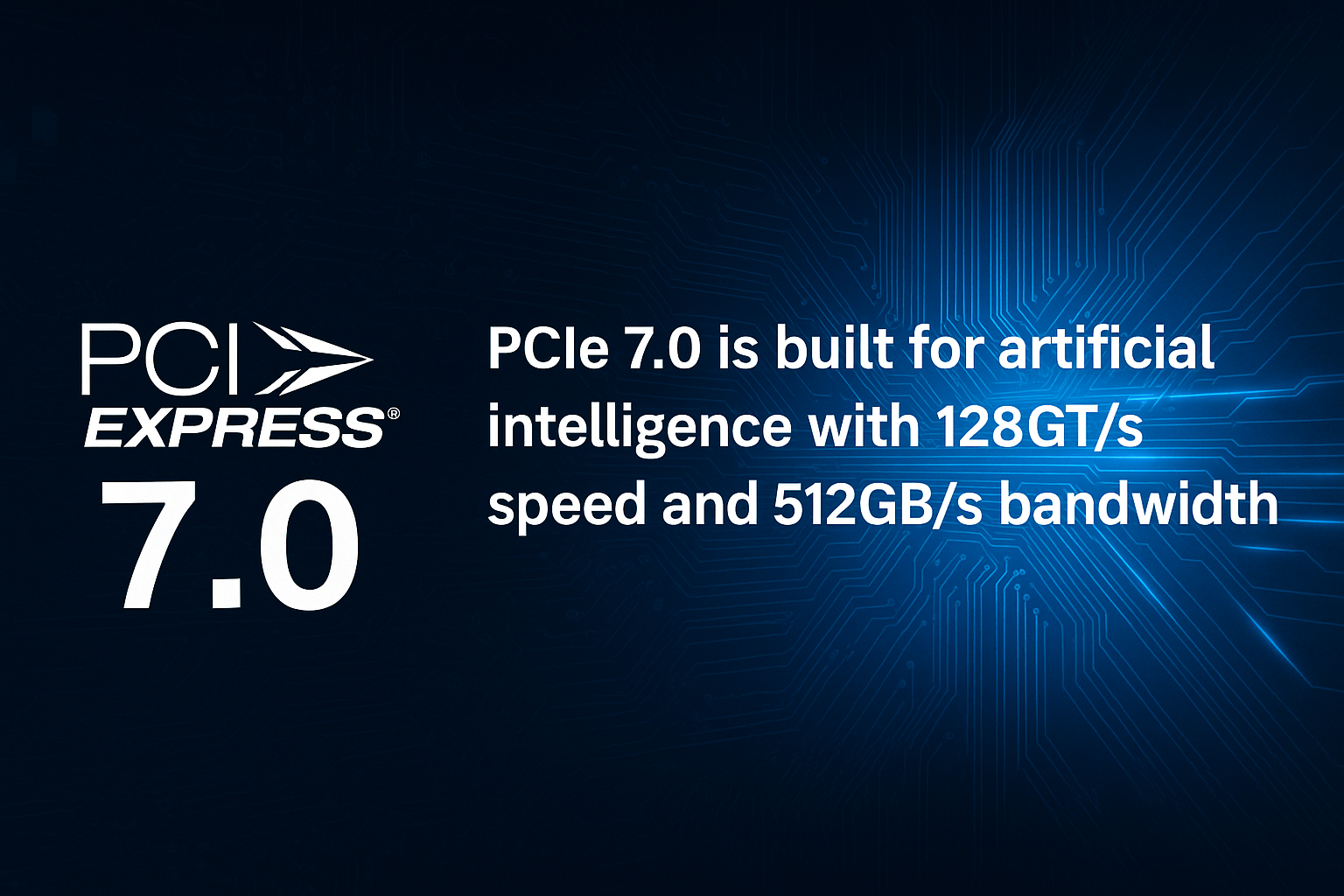PCI-SIG has officially released the PCI Express 7.0 specification to members, delivering a massive performance jump to 128 GT/s per lane and up to 512GB/s of bi-directional bandwidth in a x16 configuration. This marks another milestone in PCIe’s evolution, continuing the group’s tradition of doubling bandwidth roughly every three years.
While the specification is now finalized and available to members, actual hardware adoption will obviously take more time. PCI-SIG expects compliance testing to begin in 2026, with products built on PCIe 7.0 hitting the market around 12 to 18 months after that.
PCIe 7.0 uses PAM4 (Pulse Amplitude Modulation with 4 levels) signaling and flit-based encoding to hit its speed goals while improving power efficiency and maintaining backward compatibility. PCI-SIG is also focusing on extending channel reach and maintaining low latency and high reliability even at these new speeds.
The use cases are clear. Artificial intelligence and machine learning workloads are expanding rapidly. PCIe 7.0 aims to keep up with this growth, offering the kind of bandwidth needed in hyperscale data centers, 800G Ethernet networks, high-performance computing, quantum platforms, and even military or automotive systems.
“PCIe technology has served as the high-bandwidth, low-latency IO interconnect of choice for over two decades and we are pleased to announce the release of the PCIe 7.0 specification, which continues our long-standing tradition of doubling the IO bandwidth every three years,” said Al Yanes, PCI-SIG President and Chairperson. “As artificial intelligence applications continue to scale rapidly, the next generation of PCIe technology meets the bandwidth demands of data-intensive markets deploying AI, including hyperscale data centers, high performance computing (HPC), automotive and military/aerospace.”
Meanwhile, PCI-SIG has already started work on PCIe 8.0. The roadmap isn’t slowing down. An optical interconnect version is also being explored, which could further reshape how PCIe works in the future. For now, however, PCIe 7.0 is the latest weapon in the industry’s arsenal to feed the insatiable data demands of artificial intelligence and next-generation computing.


